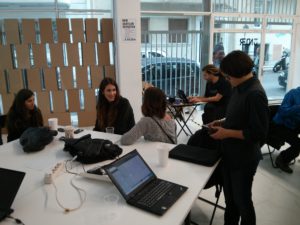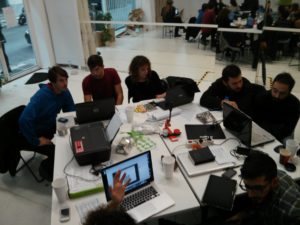We presented the after.video book project during the Besides the Screen / Open Science Conference in Sao Paolo. Adnan Hadzi & Pablo De Soto discussed the Drone Hackademy & Algorythmic Noir, a dystopian “future-opolis.” It became the location for their experimental film noir. Pushing the envelope of cinematic form, the film is edited live in real time by a custom programmed computer they call the “serendipity machine.” It delivers a changing narrative, culled from 3,000 clips, 80 voice-overs and 150 pieces of music, that could run forever and never plays the same way twice. The unexpected juxtapositions create a sense of suspense alluding to a story that the viewer composes. Driven by key words, the work seamlessly comes together as a movie that is not a movie. The film draws on the abstractions and reflections on transcendence of the artist Kasimir Malevich, and the fate of Russian astronaut Yuri Gagarin, seen through the lens of science fiction and film noir.
 The film follows the observations and surveillance of a geophysicist named Holz (Jeff Wood), stuck in a 1970s-looking metropolis operated by the New Method Oil Well Cementing Company. Voiceovers and dialogues forge the implied narrative—wire-tapped telephone conversations, reel-to-reel tapes, snippets of a job interview between Mr. Holz and his employer and a mysterious woman referred to simply as “Dispatch.” According to the Musée d’art contemporain de Montréal, whiteonwhite is a fascinating investigation into space and time, utopia and dystopia, fractured narration, train travel and landscapes marked by economic and ecological upheaval.
The film follows the observations and surveillance of a geophysicist named Holz (Jeff Wood), stuck in a 1970s-looking metropolis operated by the New Method Oil Well Cementing Company. Voiceovers and dialogues forge the implied narrative—wire-tapped telephone conversations, reel-to-reel tapes, snippets of a job interview between Mr. Holz and his employer and a mysterious woman referred to simply as “Dispatch.” According to the Musée d’art contemporain de Montréal, whiteonwhite is a fascinating investigation into space and time, utopia and dystopia, fractured narration, train travel and landscapes marked by economic and ecological upheaval.

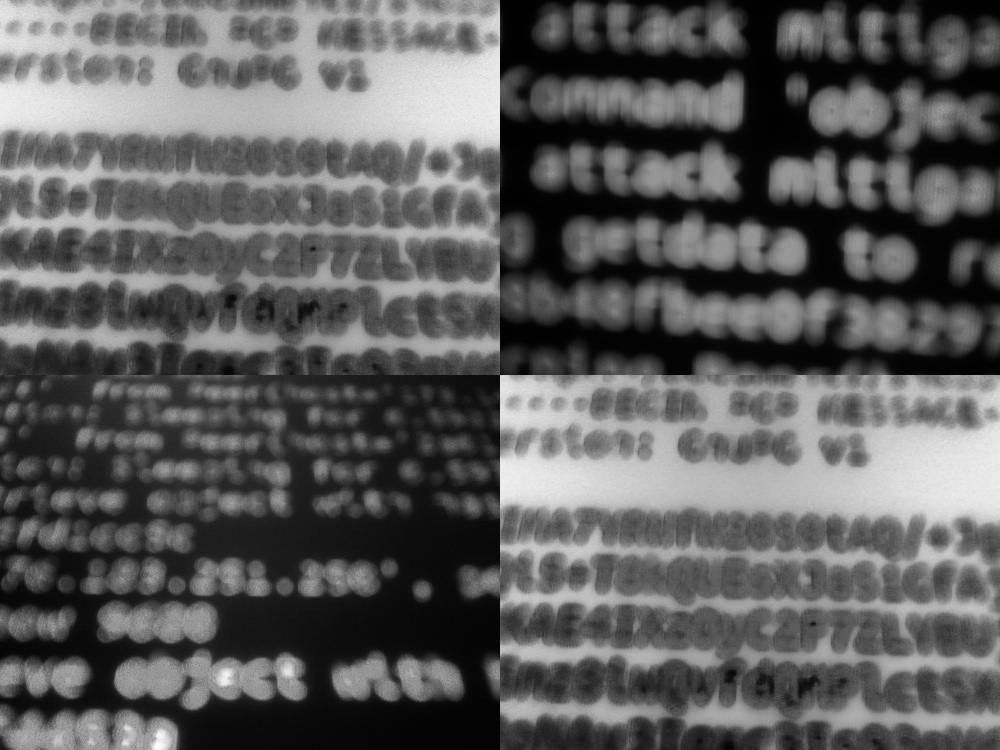
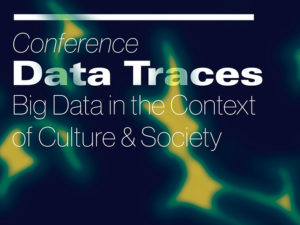

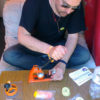 Join us in the lobby area of Haus der Kulturen der Welt on Friday 30th January to make sync code badges and configure your media files, messages and phone things to reSync @ Capture All.
Join us in the lobby area of Haus der Kulturen der Welt on Friday 30th January to make sync code badges and configure your media files, messages and phone things to reSync @ Capture All.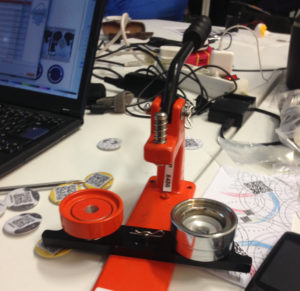 Pick up a flyer sheet and claim a reSync ‘key’, print posters and press your own badges. Each badge features the unique QRcode to promote media from your smart phones, tablets and pc’s using Bit Torrent Sync
Pick up a flyer sheet and claim a reSync ‘key’, print posters and press your own badges. Each badge features the unique QRcode to promote media from your smart phones, tablets and pc’s using Bit Torrent Sync 